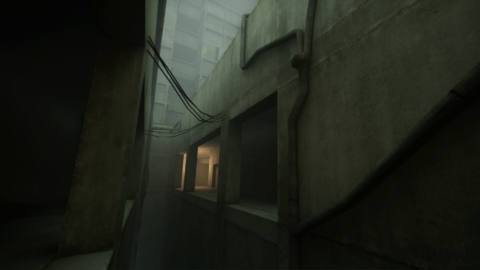The Axis Unseen is a very different sort of game to The Elder Scrolls’ decadent, sprawling slices of fantasy life, but it also kind of feels like Skyrim stripped to the studs, an entire game made out of one strand of The Elder Scrolls series’ DNA. No townsfolk, guilds, or celebrity voice cameos—just you, a bow, a crouch-walk button, and a world full of skeleton-strewn alpine vistas and vaguely Norse creatures to hunt.
The result definitely impressed me in The Axis Unseen’s first publicly available demo after years of trailers and teasers. It’s arguably in a completely different genre than the Bethesda RPGs creator Nate Purkeypile formerly worked on, but it feels like an elaboration on a very specific way of playing those games. This is a ranger simulator, not an RPG where you get to play a ranger. Thanks to that focus, The Axis Unseen is an isolating, surreal, and very satisfying stealth-shooter.
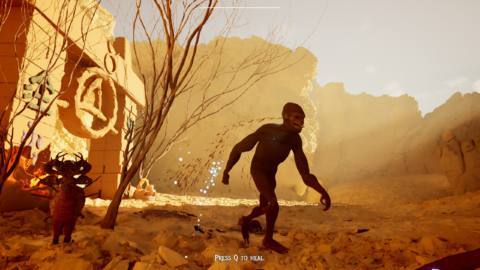
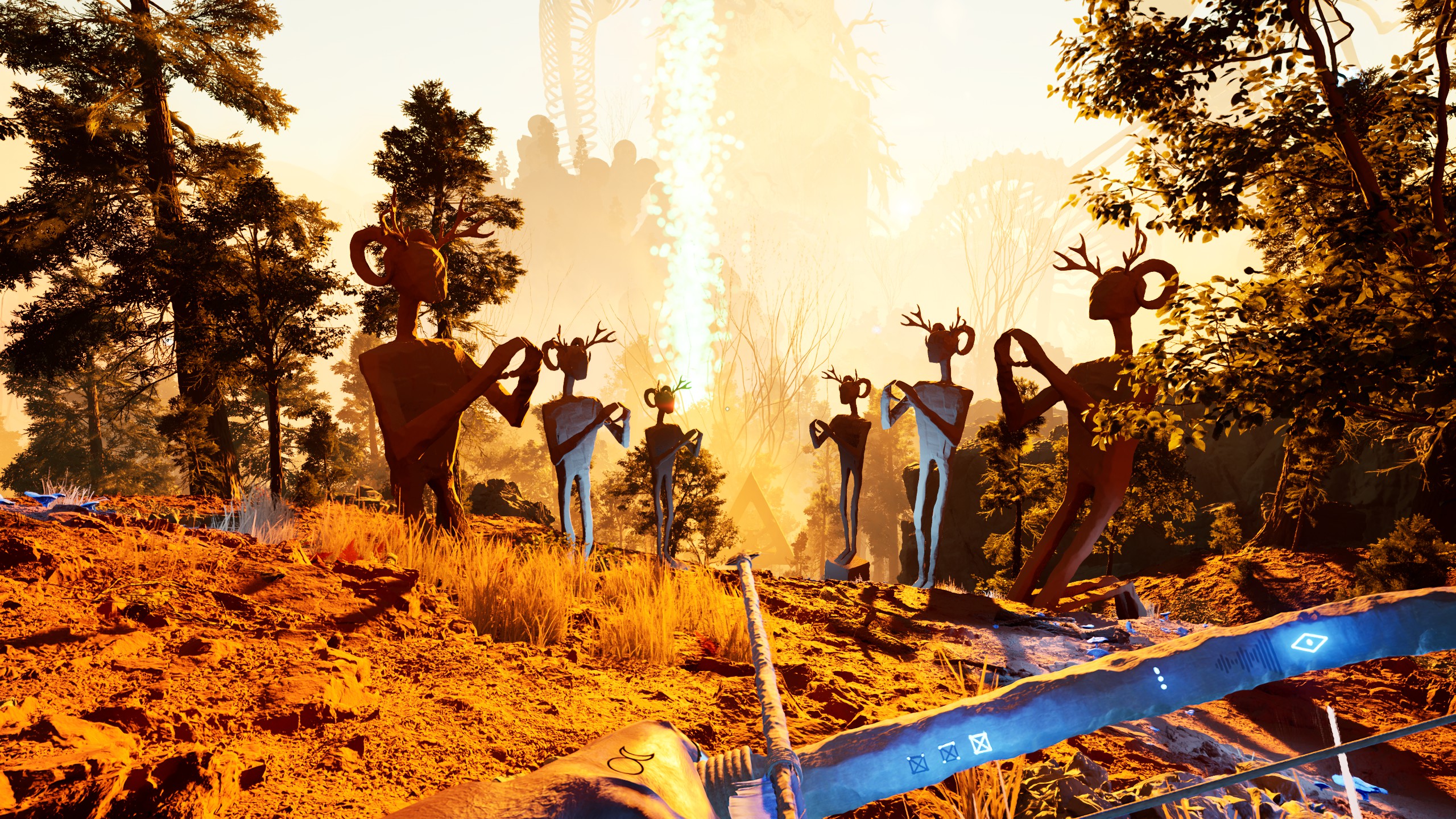
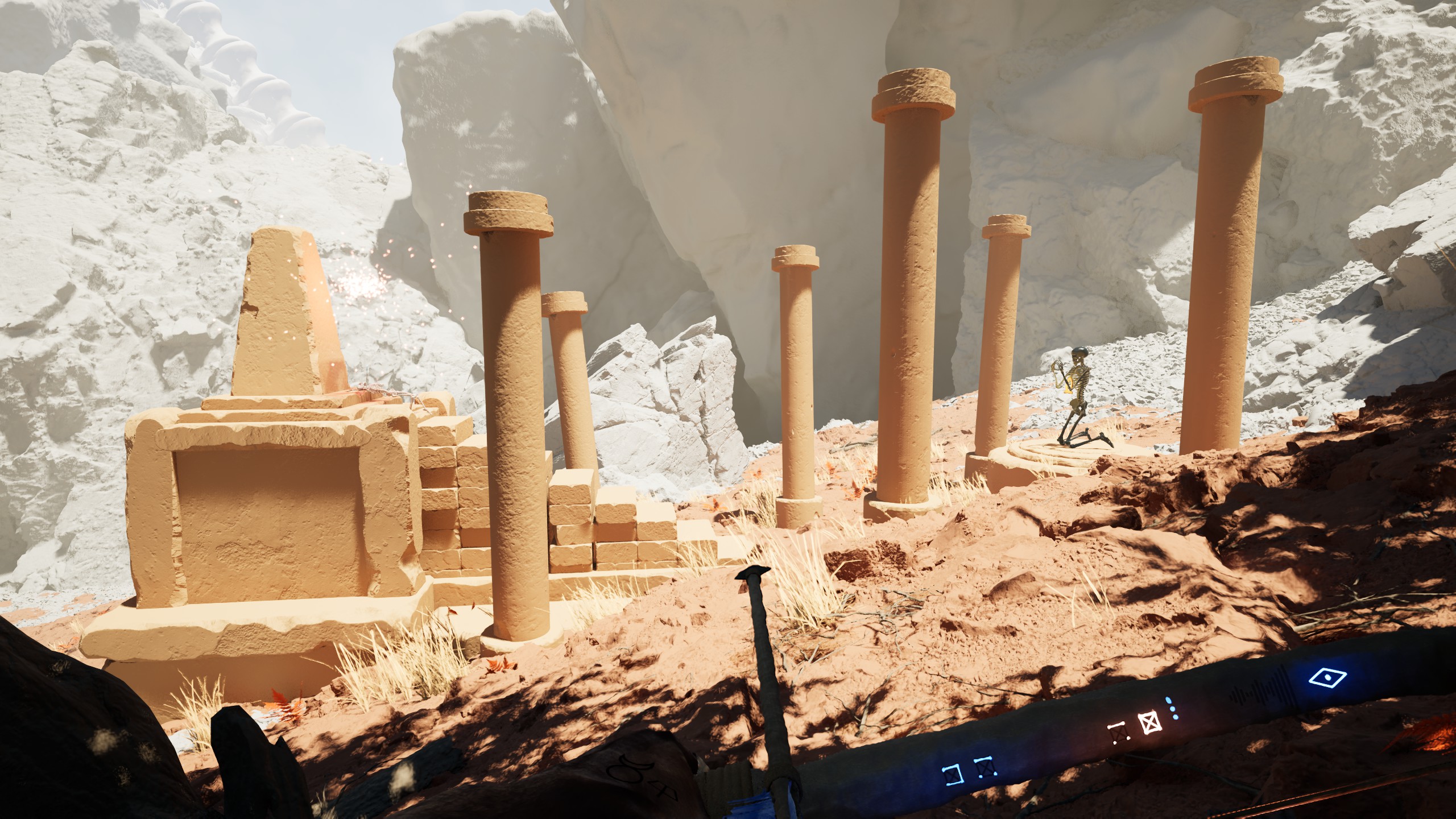
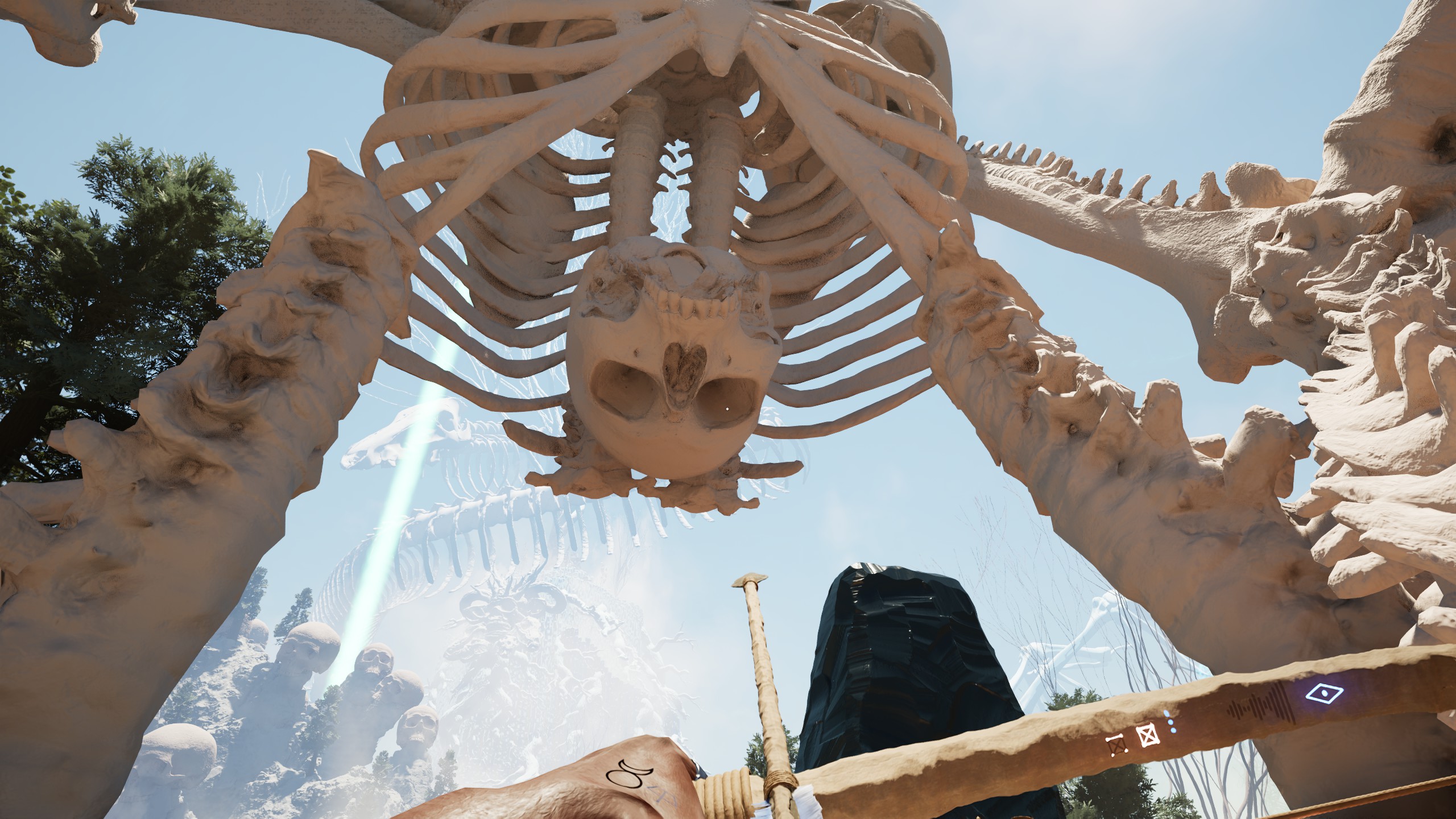

The demo opens with a sort of combination tutorial and playable trailer following a hunter through their early life, training, and flashes of mythic battles. It’s sort of like the beginning of Metroid Prime in that you get to frag out with a full endgame arsenal before you’re brought back down to earth. In this case, the hunter you’re playing as dies, and you take control of their successor in the game proper.
While the game eventually opens up an arsenal of magical powers and alternate arrowheads, you’ve got two main moves at your disposal: crouch walking, and shooting your bow. After that pre-game frag out, your quiver is severely restricted: Just three arrows to start, though you automatically hoover them back up on approach. The resulting shooting is tense and high stakes, demanding you make every shot count with a robust locational damage system. Aggressive fantasy elk go down quick with a shot to the lungs, for example, but their gnarled horns make for a natural protection against headshots.
And it feels fantastic to land a killing blow on one of Odin’s magical creatures. You get this nice screen shake, sound effect, and a geyser of blood on the killshot—Purkeypile nailed the same magic that makes videogame archery feel so good in Skyrim, Far Cry, and Overwatch. I’m still trying to pin down exactly how I feel about The Axis Unseen’s stealth though. I never felt as in control as I do in Metal Gear or Thief, but there are more variables at play and I think it’s going for a different sort of experience. I did find that its light HUD feedback (how much sound you make, how visible you are) was just never as reliable as purely avoiding an enemy’s line of sight.
But The Axis Unseen’s stealth frequently resulted in these great cat and mouse duels between me and the wildlife. The game has excellent sound design—I could identify various critters by their footsteps after about an hour of playing—and once I found myself in one’s territory, I’d be slowly circling around, trying to get eyes on it before it spotted me first.
The other big pillar of The Axis Unseen, its open world exploration, is also pretty superb. You start the game with no map or clear objectives, just the knowledge that green pillars of light visible throughout the world will make you stronger. From there, it’s up to you to hike over hill and dale, dealing with hostile creatures and checking out interesting landmarks. It makes for a surreal, meditative experience, though I do think the largely HUD-less game would benefit from a compass, at least a diegetic one you have to hold a button to use.
The visuals are a real draw to keep wandering: Everything looks like heavy metal album art in The Axis Unseen, a world of cryptic sandstone statues and giant skeletons lurching out of the ground, and I only saw the first of many visually distinct zones. It’s a bit of a performance hog though: On an RTX 3070, no amount of fiddling with settings got me to a consistent 60fps, with medium preset DLSS Performance settling in the low 50s.
Minor complaints aside, The Axis Unseen is a game I’ve been looking forward to for some time, and its demo did not disappoint. You can check out the demo for yourself and wishlist The Axis Unseen on Steam ahead of its October 22 release.

